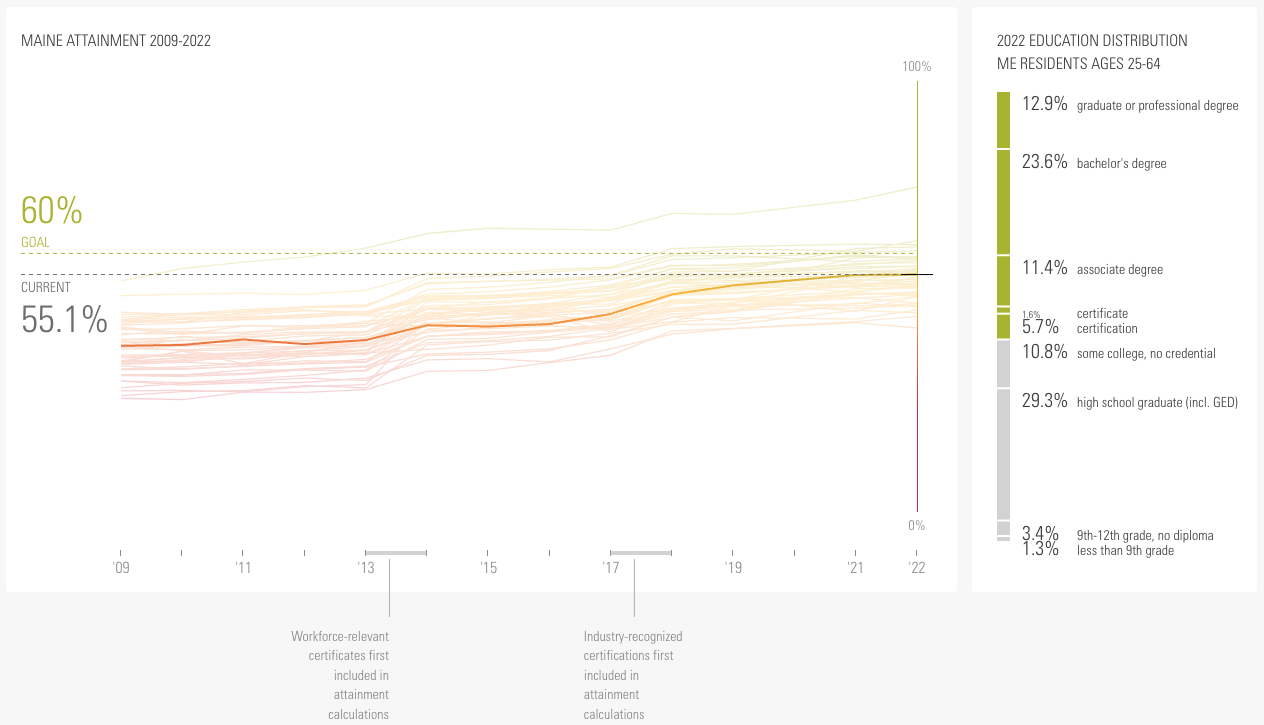POSTSECONDARY EDUCATION
Postsecondary education plays a pivotal role in preparing individuals for a wide range of careers and professional pathways. Postsecondary education encompasses educational opportunities that follow high school such as 2- and 4-year colleges, technical schooling, apprenticeships, Adult Education, and other learning opportunities that typically result in a degree or credential of value.
Maine’s statewide attainment goal is that 60% of Mainers will hold a degree or credential of value by 2025. The current rate is 55%. Postsecondary credentials of value include college degrees, skilled trade credentials, and professional certificates and certifications. This target reflects the importance of cultivating a skilled and educated workforce capable of driving economic growth, fostering individual success, and strengthening communities across the state.
Note: While indicators related to college enrollment, persistence, and completion provide valuable data, they do not capture the full range of postsecondary options and workforce readiness.

